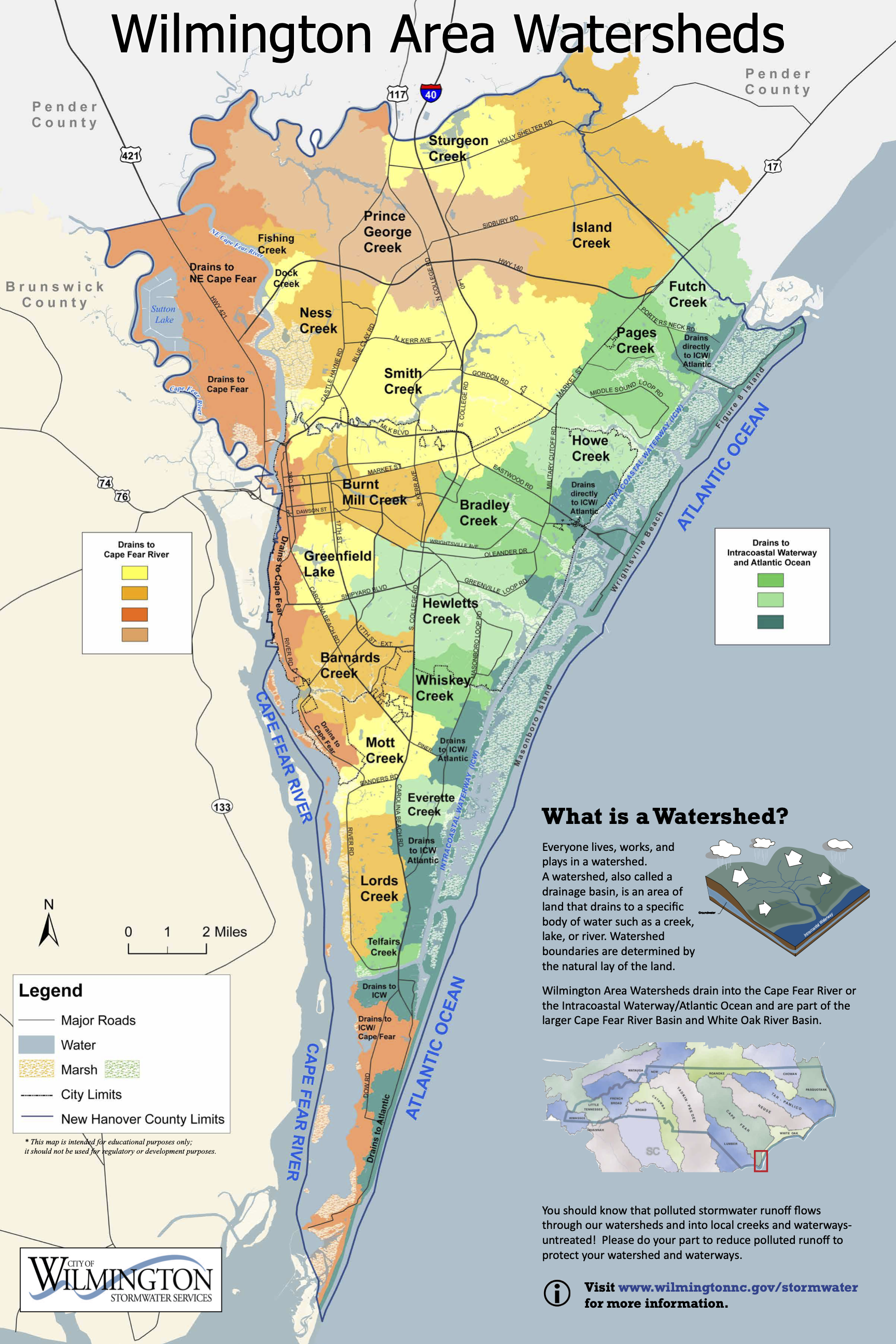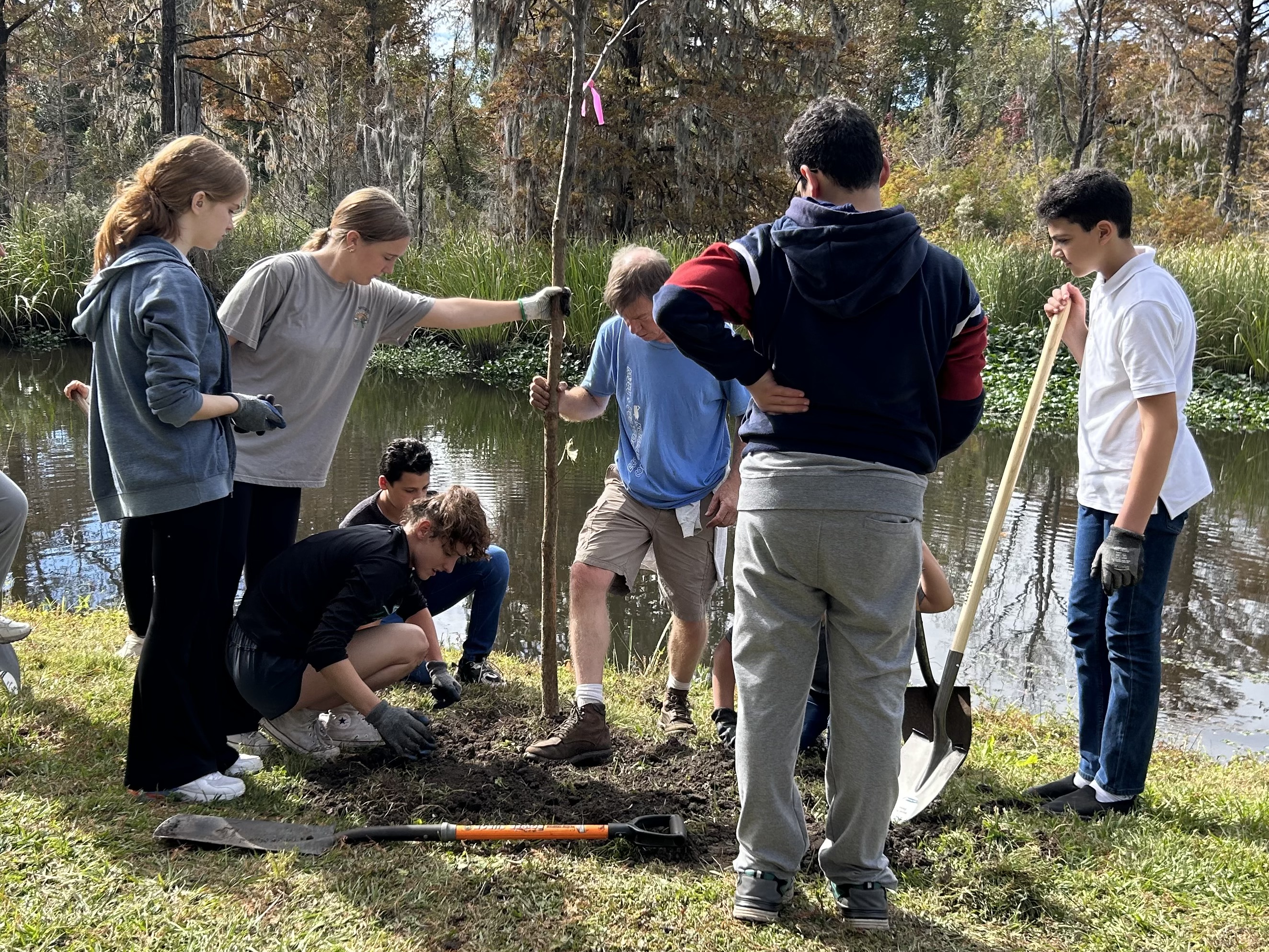About
Burnt Mill Creek
Burnt Mill Creek Restoration Project 2023-2025
Cape Fear River Watch was awarded a 3-year Environmental Enhancement Grant from the state’s office of the attorney general to help improve water quality, reduce litter and engage the community through volunteering, education signage, and recreation opportunities at Burnt Mill Creek!
Keep an eye on this page for updates on our work!
Important Information Regarding the BMC Watershed
FISHING ADVISORIES
A portion of Burnt Mill Creek has been in a fish consumption advisory since 2021. The area the advisory affects is near Archie Blue Community Park, located in the Love Grove neighborhood. This advisory is due to elevated levels of Arsenic, Hexavalent Chromium and Mercury in Bowfin, Bluegill and Flathead Catfish.
Burnt Mill Creek indirectly drains into the Cape Fear River, which also has a fish consumption advisory in portions of the river due to man-made “forever” chemicals known as PFAS. The middle and some lower portions of the Cape Fear River has an advisory, which includes a “do not eat” reccomendation for several species of fish.
For more information and current advisories please visit the North Carolina Department of Health and Human Services Fish Consumption Advisories page. For more information on “forever” chemicals please visit our PFAS page.
What is the BMC Watershed?
The watershed spans the heart of Wilmington, North Carolina covering 4,207 acres of land containing 38 acres of creek which drain into Smith Creek and from there into the Northeast Cape Fear River, into the Cape Fear River, and finally into the Atlantic Ocean.
The watershed does not follow man-made boundaries in Wilmington. It sprawls through downtown beginning east of Fifth Street expanding north of Market Street, south of Oleander Drive and east of South Kerr Avenue.
It is a highly-developed watershed dominated by commercial, industrial, and residential land uses. A whopping 36% of the watershed has impervious cover, which is a man-made surface that doesn’t absorb precipitation like parking lots and rooftops. In 2009, researchers at the University of North Carolina Wilmington confirmed that a large amount of impervious cover negatively affects impacts water quality.
Some of the watershed’s water quality problems include low dissolved oxygen levels, algal blooms, fecal bacteria contamination, invasive aquatic species, high water temperatures, and sediment plumes.
The creek is currently listed on North Carolina’s impaired water body list (303d) due to negative impacts from untreated stormwater runoff.


EEG INFORMATION CONTINUED
The objectives of this restoration project include:
1. Improve water quality through green infrastructure solutions in the form of tree plantings.
2. Reduce litter through the installation of three types of trash-capturing devices including LittaTraps, Litter Gitters and a Trash Trout Jr.
3. Increase public awareness and engage low-income minority community members and students through educational programming. As well as updating interpretive signage in Wallace Park.
4. Increase usability of the greenspace for local, primary low-income minority residents including potential enhancement to the ecological health of the creek which may impact the health of consumption fishermen and women in the area.
More ABOUT items
EVENTS AND RELATED INFORMATION

Free Eco Tour!
The urban watershed is home to diverse species of flora and fauna and is considered a birding “hotspot” with over 190 species documented along its banks, including barred owls, prothonotary warblers, yellow-crowned night herons, hooded mergansers, summer tanagers, and more. The creek is also home to species such as blue crabs, anole lizards, alligators, beavers, coyotes, and foxes.
Spring tour dates:
Friday, April 19th at 10 a.m. Click here to register!
Saturday, May 25th at 10 a.m. Registration will open soon!
Thank you volunteers!
Cape Fear River Watch would like to thank all organizations and community members that helped to plant native trees on in November 2023 and February 2024.
Over 75 volunteers helped plant 75 trees including Bald Cypress, Black Gum, Live Oak, River Birch, Swamp White Oak, Sweet Gum and Water Tupelo.
Here’s what some volunteers said their favorite part of the event was:

“Being given a chance to contribute to a worthwhile project and feel I helped make a difference with a good use of my time” – John

“Being with folks that love trees as much as I do” – Anne Terry


Cape Fear River Watch | 617 Surry Street | Wilmington, NC 28401 | Phone: 910.762.5606

